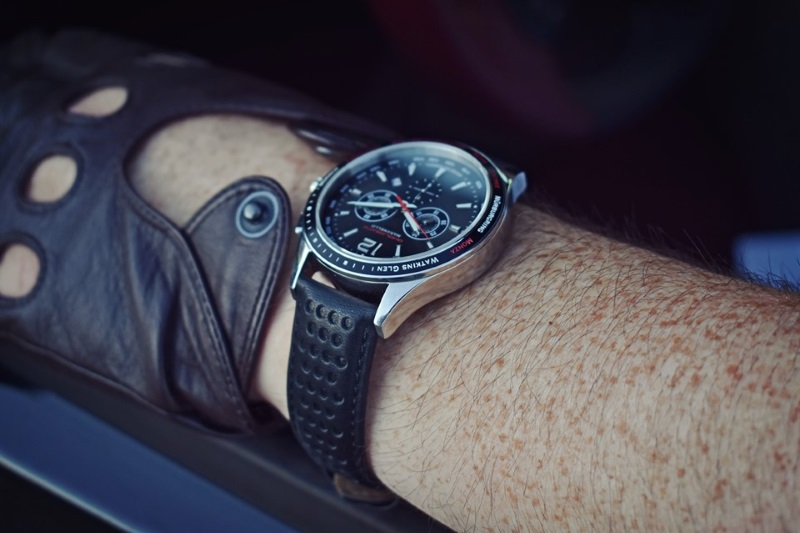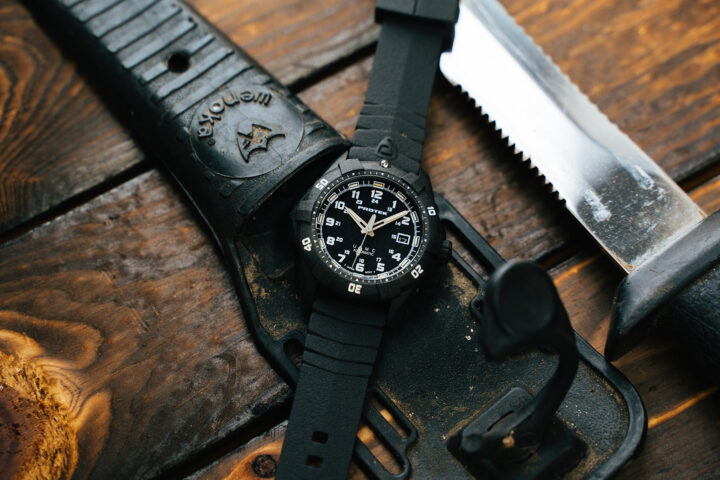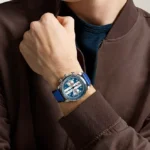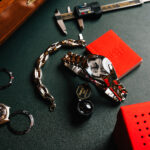by Michael Satterfield – 03/29/2021
Odds are you have seen a chronograph watch, some of the most sought-after luxury watches in the world like the Omega Speedmaster, Tag Heuer Monaco, and Breitling Navitimer are chronographs. These watches evoke images of explorers, fighter pilots, and racing drivers for good reason, they were original developed as tools for just those sort of men. All of those little dials and bezels were designed with specific purposes.
The word chronograph simply means ‘timer’ and is a reference to the timepiece’s ability to measure time without disrupting the timekeeping ability of the watch. The time measurement function can be seconds, minutes, or hours. All of this timekeeping and measurement is done by the internal watch movement, in watch-lingo movements that do more than basic timekeeping are referred to as having a “complication” a chronograph is a type of complication.
Other complications include alarms, date display, or hacking, but in the case of the chronograph, you can recognize the complication by the subdial(s) on the watch face, each measures a different period of time. In addition to measuring time, a chronograph can be used to measure distance and speed, making them useful for pilots and racing drivers before the advent of computers and GPS.
Using a Chronograph:
While it may seem complicated, using a chronograph is surprisingly simple once you know how the subdials and bezels work together. The red second hand isn’t for timing seconds, it is the timer hand that you use for precision timing and is controlled by the plungers. Depressing the plunger will snap the hand to the 12 o’clock position, so the watch can be used as a stopwatch. Some chronographs will put this function in a subdial, but it isn’t common. Like with anything different manufacturers produce variations, but for the most part, all chronographs work the same way.
One feature of many chronographs you may have noticed is the outermost ring on the bezel, called a tachymeter. This scale allows the wearer to determine speed based on known distances, such as lap times or mile markers. So let’s say you start the time at one-mile marker and you are going 60 miles an hour, the second hand will make one full revolution in 60 seconds ending back up at the 12 o’clock position. If you pass the mile marker before a full rotation and end up at 11 o’clock you should be pointed right at 65, indicating you were going 65 mph. Some tachymeters will feature miles per hour, kilometers per hour, or both. Measuring distance is done much the same way, but with a known speed, when the timer reaches the number that corresponds with your speed, you have gone one mile (or kilometer).
History of the Chronograph:
The modern chronograph was invited by Louis Moinet in 1816 and was used in the study of astronomy. Nicolas Mathieu Rieussec would go on to develop the first commercially available chronograph for King Louis XVIII in 1821 to time horse races. By 1844 Adolph Nicole had developed a re-setting feature to allow successive measurements.
In 1915, Gaston Breitling produced a chronograph with a central seconds hand a 30-minute subdial. In 1923, Breitling would introduce the stopwatch pusher feature. While most chronographs featured fixed tachymeters, in 1958 Heuer introduced the rotating bezel tachymeter allowing for more complex calculations. In 1969, Heuer, Breitling, and Hamilton worked with movement designer Dubois Dépraz to developed the first automatic chronograph.
While not much has changed since 1969, the chronograph is still one of the most iconic styles of watches, worn by astronauts, pilots, submariners, racing drivers, or guys who just like to feel a little more adventurous when they put their watch on every day. You don’t need to spend $5,000+ for a nice chronograph in fact there are several classic chronographs that can be had for around $500 like the Bulova Lunar Pilot one of which traveled to the moon on the wrist of astronaut David Scott during Apollo
To learn more about watches, watch history, or read our watch reviews CLICK HERE.





















